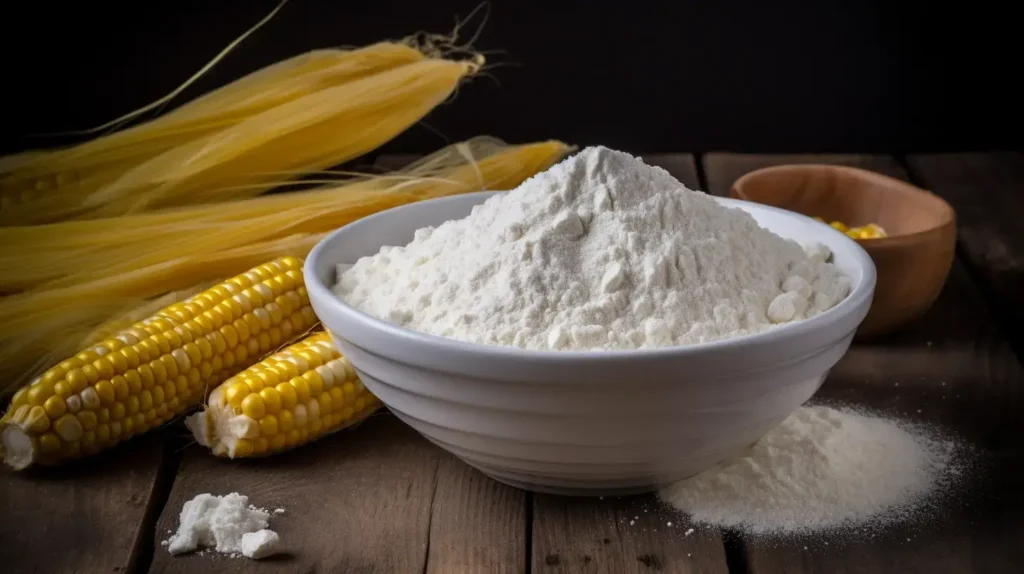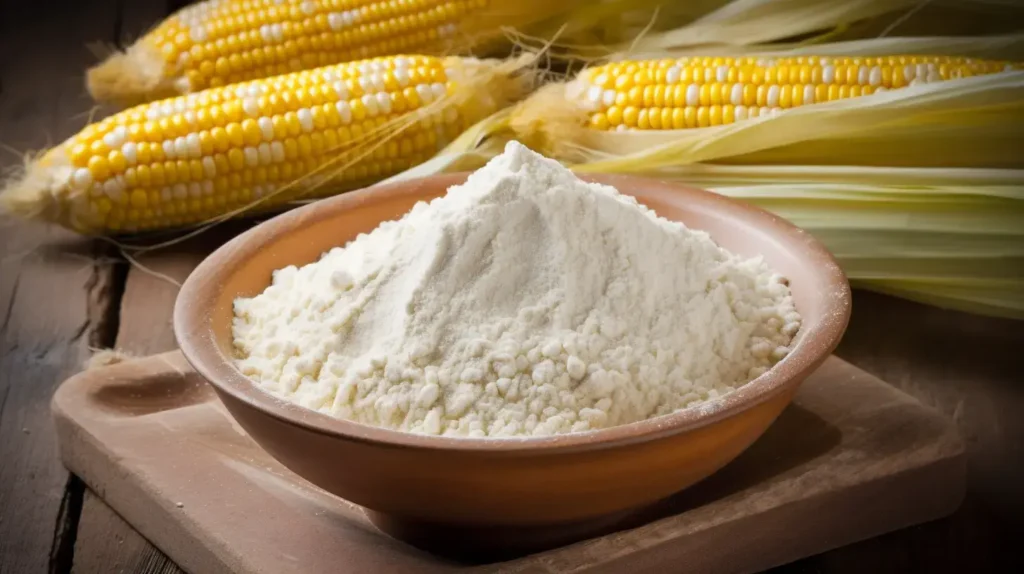Table of Contents
Is Corn Flour and Harina de Maiz the Same Thing?

Corn-based products are integral to cuisines worldwide, but they come in various forms that can confuse even seasoned cooks. A common question is whether corn flour and harina de maiz are the same. Understanding their differences helps ensure that recipes come out as intended.
What Are Corn Flour and Harina de Maiz?
- Corn Flour: A finely ground powder made from dried corn kernels, commonly used for baking and thickening sauces.
- Harina de Maiz: Known as masa harina in many recipes, it is made from corn treated with nixtamalization, a process that soaks and cooks corn in an alkaline solution before grinding.
For a deeper dive into nixtamalization, check out this informative article.
The Role of Nixtamalization in Harina de Maiz
Nixtamalization plays a critical role in transforming corn into harina de maiz. This process involves soaking corn in an alkaline solution like limewater, which softens the kernels and loosens the hull. The treated corn is then ground into a pliable dough called masa, which is dried to produce masa harina. This treatment gives harina de maiz its unique texture and flavor, essential for traditional Latin American dishes. Unlike corn flour, which is simply ground corn, harina de maiz has undergone this preparation to create a product ideal for making tortillas, tamales, and other dough-based foods. Nixtamalization also increases the nutritional value of corn, making its calcium and niacin more bioavailable. Understanding this process highlights why harina de maiz differs significantly from plain corn flour. This method has been used for centuries and remains central to many traditional recipes.
Global Perspectives on Corn Flour and Harina de Maiz
Different regions use corn flour and harina de maiz in unique ways. In the Americas, harina de maiz is synonymous with authentic Mexican cuisine, forming the base for tortillas and tamales. But, corn flour is more common in European and North American kitchens, where it thickens soups, sauces, and gravies or is used in baked goods. In Asian cuisines, finely ground corn products may substitute for wheat flour in specific recipes.
This diversity often leads to confusion, especially when recipes use terms interchangeably. For instance, in some countries, corn flour refers to corn starch, not ground corn, adding to the misunderstanding. Knowing the regional context is vital for accurately using these ingredients in recipes. Whether you’re cooking cornbread or preparing tortillas, the key lies in choosing the correct form of corn-based flour for the desired result.
Corn-Based Products: A Quick Comparison
Corn products, including corn flour, harina de maiz, cornmeal, and cornstarch, come from the same plant but vary in processing and usage. Cornmeal, with its coarse texture, works best for dishes like polenta or cornbread. Cornstarch, a refined powder, primarily serves as a thickening agent. Corn flour, often mistaken for cornstarch, consists of finely ground dried corn kernels and suits baking or coating fried foods. Harina de maiz stands out due to nixtamalization, which makes it ideal for recipes requiring pliable dough.
These processing differences define the texture, flavor, and appropriate use of each product. Recipes call for specific types of corn-based ingredients for a reason, and recognizing these distinctions improves your cooking outcomes. With a range of options available, choosing the correct one helps ensure success in preparing your dish.
Cultural Significance and Culinary Uses
Corn has been a dietary staple for thousands of years, particularly in Latin America. Dishes like tortillas and tamales rely heavily on harina de maiz. In contrast, corn flour is more versatile in baking and thickening recipes across global cuisines. You can also explore some innovative Latin-inspired dishes in the article on quesadilla rellena.

Differences in Processing
Corn Flour
- Production: Ground from dried corn kernels.
- Texture: Fine and powdery.
- Uses:
- Thickening sauces.
- Baking cornbread, pancakes, or cakes.
Harina de Maiz (Masa Harina)
- Production: Made through nixtamalization, enhancing its texture and flavor.
- Texture: Slightly coarse but pliable when mixed with water.
- Uses:
- Essential for tortillas, tamales, and pupusas.
- Perfect for shaping and molding doughs.
Are They Interchangeable?
The interchangeability of these two products depends on the recipe:
- Works Well: When thickening soups or gravies.
- Doesn’t Work: For recipes requiring pliable dough, like tortillas or tamales.
The Role of Nixtamalization in Harina de Maiz
Nixtamalization transforms corn into harina de maiz by soaking it in an alkaline solution like limewater. This process softens the kernels, loosens the hull, and prepares the corn for grinding into a pliable dough called masa. After drying, this masa becomes masa harina. This preparation gives harina de maiz its distinctive texture and flavor, making it essential for traditional Latin American dishes. Unlike corn flour, which involves simple grinding of corn, harina de maiz undergoes nixtamalization to create a product perfect for tortillas, tamales, and other dough-based foods. The process also boosts the nutritional value of corn by increasing the bioavailability of calcium and niacin. Nixtamalization has remained central to traditional recipes for centuries, explaining why harina de maiz holds such an important place in culinary traditions compared to plain corn flour.
The Role of Nixtamalization in Harina de Maiz
Nixtamalization plays a critical role in transforming corn into harina de maiz. This process involves soaking corn in an alkaline solution like limewater, which softens the kernels and loosens the hull. The treated corn is then ground into a pliable dough called masa, which is dried to produce masa harina. This treatment gives harina de maiz its unique texture and flavor, essential for traditional Latin American dishes. Unlike corn flour, which is simply ground corn, harina de maiz has undergone this preparation to create a product ideal for making tortillas, tamales, and other dough-based foods. Nixtamalization also increases the nutritional value of corn, making its calcium and niacin more bioavailable. Understanding this process highlights why harina de maiz differs significantly from plain corn flour. This method has been used for centuries and remains central to many traditional recipes.
Global Perspectives on Corn Flour and Harina de Maiz
Different regions apply corn flour and harina de maiz in distinct ways. In the Americas, harina de maiz serves as a cornerstone of authentic Mexican cuisine, forming the base for tortillas and tamales. Meanwhile, corn flour sees more frequent use in European and North American kitchens, where it thickens soups, sauces, and gravies or contributes to baked goods. Asian cuisines often use finely ground corn products as substitutes for wheat flour in specific recipes.
This variety in usage creates confusion, especially when recipes use terms interchangeably. In some countries, for example, corn flour refers to cornstarch instead of ground corn, adding to the misunderstanding. Understanding the regional context helps clarify how to use these ingredients correctly. Whether preparing cornbread or making tortillas, selecting the appropriate form of corn-based flour ensures the recipe achieves the desired result.
Common Misunderstandings About Harina de Maiz
The term harina de maiz often causes confusion because it translates to “corn flour” in English. However, it generally refers to masa harina, the nixtamalized product used in Mexican and Latin American cooking. Many people assume it can replace regular corn flour, but this substitution rarely works in recipes. Another common misunderstanding involves its comparison to cornmeal.
Although similar in texture, harina de maiz is processed differently, giving it distinct binding properties ideal for tortillas and tamales. Additionally, the term varies by region. In some countries, harina de maiz might simply mean ground cornmeal or flour. This variation underscores the importance of checking whether a recipe specifically calls for nixtamalized masa harina. Avoiding these misunderstandings ensures you choose the right ingredient for the dish you’re preparing.

How to Store Corn Flour and Harina de Maiz Properly
Proper storage keeps corn flour and harina de maiz fresh and prevents spoilage. Both should be stored in airtight containers to keep out moisture and pests. Place the containers in a cool, dark place, such as a pantry, to maintain quality. If you live in a humid climate, refrigerating or freezing these products can extend their shelf life. However, ensure the containers are tightly sealed to prevent them from absorbing odors. Unlike corn flour, which has a longer shelf life, harina de maiz is slightly more perishable due to its processing. Check for changes in texture, smell, or taste, which could indicate spoilage. Storing these flours correctly ensures they retain their flavor and usability, making them ready for your next recipe.
FAQs:
What Is the Difference Between Corn Flour and Masa Harina?
Masa harina undergoes nixtamalization, which changes its texture and flavor, while corn flour is untreated ground corn.
What Is Nixtamalization, and Why Does It Matter?
Nixtamalization is the process of soaking and cooking corn in an alkaline solution, such as limewater. This treatment softens the corn, removes its hull, and enhances its flavor and nutritional profile. The process is essential for creating harina de maiz, as it makes the corn pliable enough to form dough for tortillas, tamales, and other traditional dishes. Unlike corn flour, which doesn’t undergo this process, nixtamalized corn offers a unique texture and taste that are crucial in Latin American cuisine. It also increases calcium and niacin levels, making it more nutritious.
Can Harina de Maiz Be Used in Baking?
Yes, but it is primarily intended for making pliable doughs.
Is Cornmeal the Same as Harina de Maiz?
No, cornmeal is coarser and not nixtamalized.
Why Is Harina de Maiz Important in Latin American Cuisine?
Harina de maiz is essential in Latin American cooking because it forms the base for iconic dishes like tortillas, tamales, and pupusas. Its unique properties, derived from nixtamalized corn, allow it to create a pliable dough that holds its shape and enhances the flavors of these dishes. The flour has been a cornerstone of Latin American diets for centuries, symbolizing cultural heritage and tradition. Without harina de maiz, the textures and flavors of these dishes would not be possible.
Can Cornmeal Be Substituted for Harina de Maiz?
Cornmeal can sometimes replace harina de maiz for breading or frying, but it is unsuitable for recipes requiring dough, such as tortillas or tamales. This is because cornmeal lacks the binding properties provided by nixtamalized corn. Cornmeal is also coarser, which affects the texture of the final dish. For authentic results, especially in Latin American recipes, use harina de maiz instead of cornmeal. Substituting can drastically alter the flavor, texture, and success of the recipe.
Why Is Harina de Maiz Important in Latin American Cuisine?
Harina de maiz is essential in Latin American cooking because it forms the base for iconic dishes like tortillas, tamales, and pupusas. Its unique properties, derived from nixtamalized corn, allow it to create a pliable dough that holds its shape and enhances the flavors of these dishes. The flour has been a cornerstone of Latin American diets for centuries, symbolizing cultural heritage and tradition. Without harina de maiz, the textures and flavors of these dishes would not be possible.
Conclusion
While corn flour and harina de maiz are derived from the same source, their processing methods and applications differ significantly. For recipes requiring elasticity and binding, harina de maiz is the better choice. For thickening or baking, corn flour is ideal.